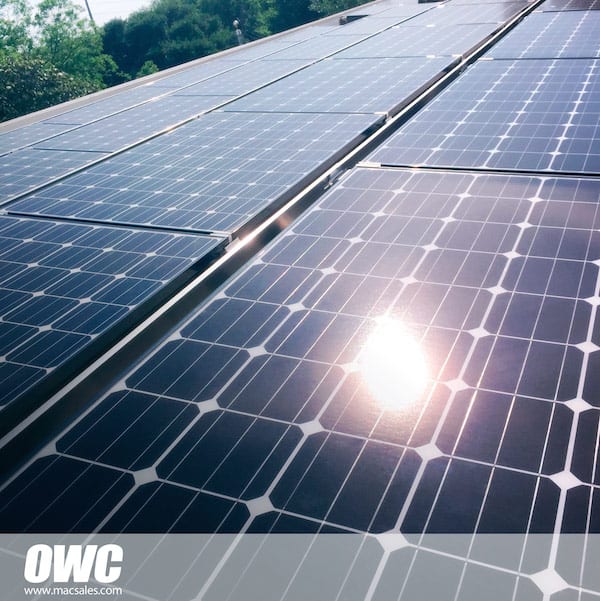
OWC announced today on Earth Day that as part of the company’s sustainability program, it will soon produce enough on-site wind and solar power to cover all energy needs for four facilities in three states (Illinois, Texas and Nevada), becoming completely energy independent due to its adoption of alternative energy sources.
OWC provides customers with products that allow them to maximize the longevity of their technology products and to improve the performance of those products. Since 2003, OWC has worked to extend this approach to its business operations, with the result that the company currently recycles 97 percent of its solid waste materials; received LEED Platinum Certification by the Green Building Certification Institute in 2010, and will soon reach its goal of generating more power than it consumes.
Energy Independence
OWC has focused on facility efficiency to reduce energy requirements with technologies such as geothermal heating and cooling systems and on-site renewable energy production for the provision of energy needs. The company kicked off its alternative, on-site energy generation program with the installation of a Vestas V39-500kW wind turbine in 2009, and quickly became the first manufacturer/distributor in the U.S. to become 100% on-site wind powered. OWC headquarters in Woodstock, Illinois currently generates more power than is consumed at this location, where approximately 176 of OWC’s 215 team members operate from today. The excess power flows out to the local power grid, providing a renewable source of energy to other energy consumers in McHenry County.
OWC has also adopted solar power as an energy source. In late 2012 and early 2013, OWC opened two new locations in Texas, and soon installed solar panels on the roof of its downtown Austin location. Energized at the beginning of 2014, the highly efficient panels installed now generate approximately one-third of the power consumed by this three-story building including the majority of power that is consumed by the third floor occupied by OWC. As in Woodstock, excess power that accrues during low usage periods is put out onto the Austin Energy grid. The project not only solidified OWC’s reputation as a leader in utilizing green technology, but it also helps to explain why the tech firm has fit in so well since it expanded into Austin about three years ago.
Even factoring in a total of four operational centers in three states, OWC’s current solar and wind generation still provides for approximately 88 percent of its total annual power needs, and OWC stipulates that any remaining power be purchased from available local renewable power providers. The goal is to generate beyond the need of the organization at large. To achieve this, a new project has already commenced to utilize the roof of the 37,000 square foot Woodstock HQ operation for solar generation. Following the completion of this project, expected by early summer 2015, OWC will not only generate more power than is used at its four facilities, but will also add excess, clean wind and solar energy to the local power grid, and be able to continue to self-power as OWC continues to expand to new facilities in the future.
“Everything we do at OWC is about going further,” said Larry O’Connor, Founder and CEO of Other World Computing. “Taking technology further, enabling existing technology to go further with better performance and greater lifetime of productive use. Going further in support of our customers and their technology needs. Using proven technology to see our natural resources go further and reduce consumption and waste benefits the world we all share for today and our children tomorrow.”
The Illinois headquarters also benefits from a geothermal heating and cooling system. Water is pumped into geo-wells set more than 200 feet into the ground, moving from the building to below ground level and then back, day after day, year after year.
If the water has become warmer in the summer when passing through the building, it will give up that heat to the earth, 200 feet below the surface, where it is always a range of 47 to 54 degrees Fahrenheit. The process works in the reverse during cold weather months, preheating the air for the heating system so the system doesn’t have to heat air from the outside, which could be at zero degrees Fahrenheit or colder. For more information on OWC’s geothermal system, please visit eshop.macsales.com/green/points/energy.html.
Recycling
Starting with an aggressive corrugated box recycling program in 2003, OWC has expanded its solid waste recycling program to include all paper, plastic, and aluminum cans. The total of recorded recycled solid waste in 2005 was 32.5 tons. After moving to its new facility in 2008, OWC’s tally of recycled solid waste from 2008 to 2015 reached an impressive total of 287.3 tons – materials that otherwise would have become part of the solid waste stream.
Non-recyclable materials such as food materials from the staff lunchroom go into a solid waste compactor, but only after being monitored to extract any recyclable materials. And a composting program for a new onsite employee garden has further reduced food waste, resulting in a compactor box only needs to be removed about every 11 months. Imagine having your trash picked up only once a year!
OWC continues to work at bettering its 97 percent solid waste recycling record by only using recyclable plastic and aluminum containers in company vending machines. OWC also takes “green” even further by helping with local fundraising efforts, through donating aluminum cans to a local animal shelter and used printer toner cartridges to local schools. And by using native plants in landscaped areas, OWC helps conserve water.
Green Buildings
As part of its mission to design its new Illinois headquarters to be “green” from the ground up, OWC participated in theUnited States Green Building Council’s Leadership in Energy and Environmental Design program. The result was that the new OWC corporate campus was awarded LEED Platinum Certification in March 2010 by the Green Building Certification Institute, the highest achievable level.
Out of more than 14,000 LEED projects engaged worldwide since the program’s inception, OWC is one of less than 300 to achieve the Platinum standard. With this recognition, OWC also became the first privately owned light manufacturing/assembly building in Illinois to obtain LEED Platinum status. The LEED (Leadership in Energy and Environmental Design) Green Building Rating System is the nationally accepted benchmark for the design, construction, and operation of high performance green buildings.
In September 2010, OWC’s headquarters earned the U.S. Environmental Protection Agency ENERGY STAR rating for building operations that perform in the top 25 percent of similar facilities nationwide for energy efficiency.
OWC continues to upgrade existing buildings for even more energy efficiency, such as recently installing high-efficiency air-conditioning units in its Austin facility, as well as special dual-reflective window film that blocks up to 66 percent of the sun’s heat.
“Today on Earth Day, we remind ourselves of the importance of respecting the environment. We at OWC are proud of our dedication to a greener planet with LEED and Green Initiatives and are committed to preserving the environment with non-polluting sustainable wind turbine and solar energy solutions,” said O’Connor.
[nggallery id=94]

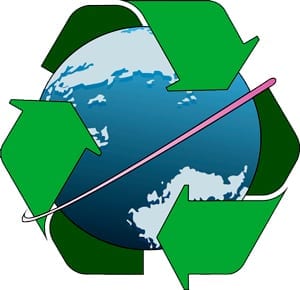
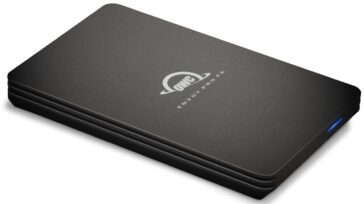
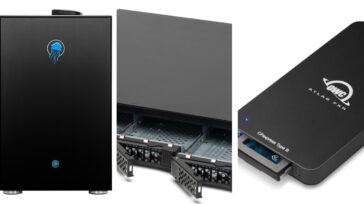

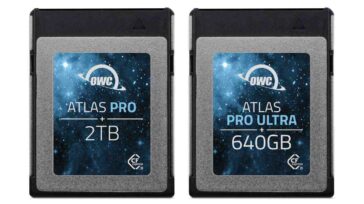


Nice work!